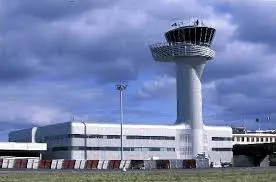By Ghana News
Copyright ghanamma

A new cloud-based system aims to replace aging air traffic control messaging infrastructure with faster, more affordable technology that could particularly benefit resource-constrained aviation authorities in emerging markets.
SITA has launched a new Software as a Service (SaaS) cloud-based digital platform that aims to support global air traffic communication by reducing the cost and complexity of legacy systems, addressing challenges that have made it difficult for authorities to coordinate across borders and keep pace with growing traffic demands.
The platform, called SITA ATC Bridge, supports Civil Aviation Authorities, Air Navigation Service Providers (ANSPs), and regulators who need dependable communication across the International Civil Aviation Organization (ICAO) Air Traffic Services (ATS) Messaging Handling System (AMHS).
“Across the industry, air navigation service providers are being asked to do more with less: handle growing traffic volumes and modernize systems, often with tight budgets,” said Martin Smillie, Senior Vice President of Communications and Data Exchange at SITA. “Legacy communication systems make that harder by being expensive, rigid, and complex to maintain.”
Current ATC messaging systems are limited in their capabilities, operationally demanding, and slow to adapt to modern needs. The new platform attempts to address those limitations by eliminating the need for physical installations, allowing users to access the system remotely from any location.
The cloud-based approach introduces an ATC Message Handling System Gateway designed to exchange large messages securely and reliably. By removing requirements for expensive hardware, software licenses, and ongoing IT maintenance, the platform shifts to a subscription-based pricing model that scales with user needs.
Security features include encryption, strict access controls with connection authentication, anti-virus protection, and regular audits. Automatic updates aim to keep systems aligned with international aviation standards and ICAO protocols, addressing compliance concerns that have complicated legacy system management.
The solution targets both mature ANSPs in developed markets and emerging aviation authorities that may lack resources for traditional infrastructure investments. By lowering total cost of ownership, SITA positions the platform as making modern air traffic communication more accessible to resource-constrained authorities.
Whether the platform achieves significant adoption depends partly on how effectively it integrates with existing systems and whether aviation authorities often conservative in technology decisions given safety implications embrace cloud-based infrastructure for mission-critical communications.
The aviation industry has historically moved cautiously on technology transitions, particularly for systems where failures could have safety consequences. Cloud platforms offer advantages in cost, scalability, and maintenance, but also require authorities to trust that remote systems will prove as reliable as on-premises infrastructure they directly control.
SITA’s position as an established aviation IT provider may ease adoption concerns. The company has operated in the sector for decades, building credibility that newer entrants would lack. However, the platform still represents a significant architectural shift from how air traffic communication has traditionally functioned.
The emphasis on emerging markets is strategic. Developed aviation authorities often have substantial investments in existing infrastructure, making transitions costly and complex. Emerging markets with less legacy infrastructure may find cloud-based solutions more attractive, particularly if budget constraints limit alternatives.
The platform connects ANSPs within the ICAO network, leveraging modern technology and an easy-to-use interface to streamline communication. The service is subject to a pending patent, suggesting SITA sees proprietary value in its approach to cloud-based ATC messaging.
For the aviation industry, the launch represents another step in broader digital transformation efforts. Whether it proves transformative or simply becomes one option among several competing approaches will depend on adoption rates, operational performance, and how effectively it addresses the real-world challenges air navigation authorities face daily.